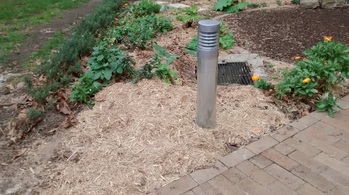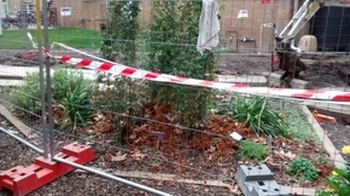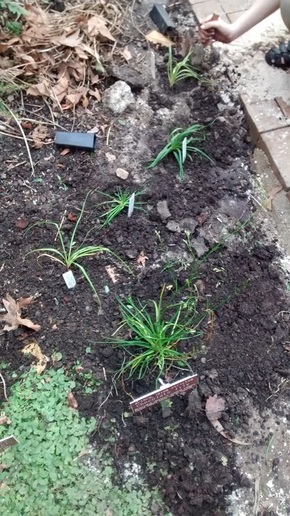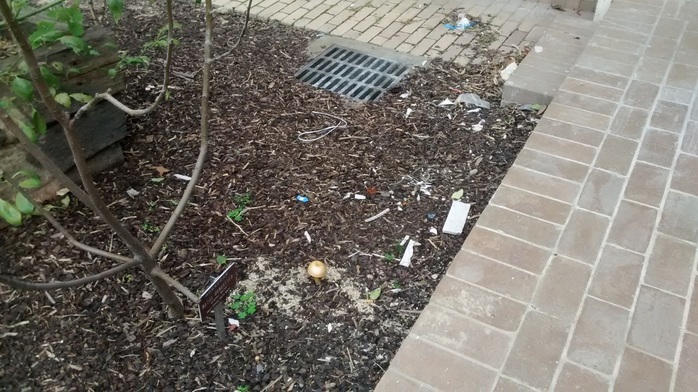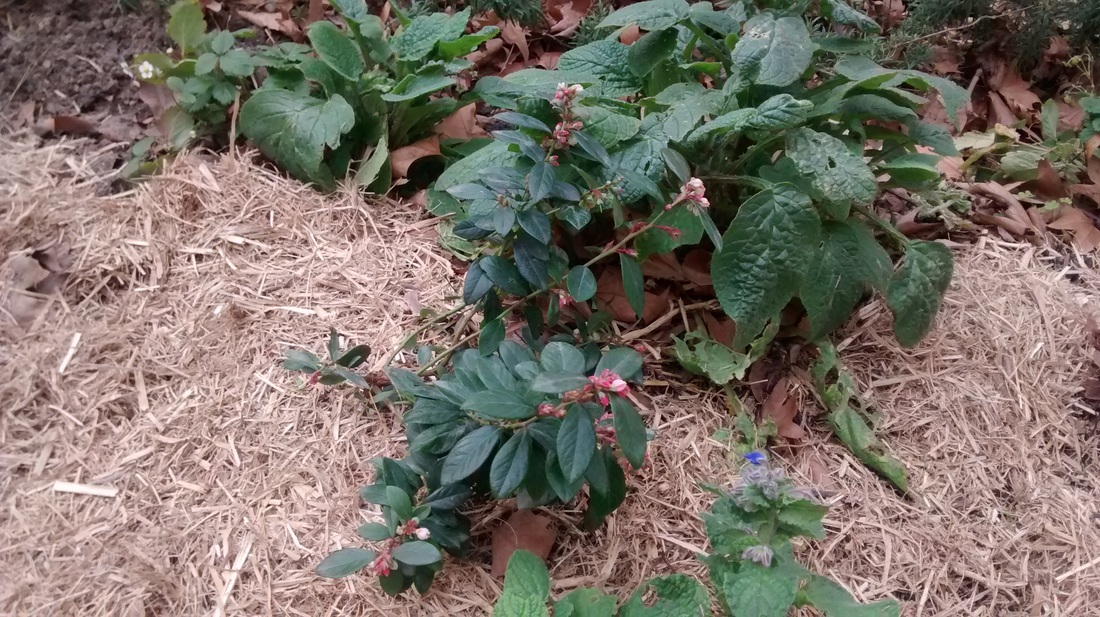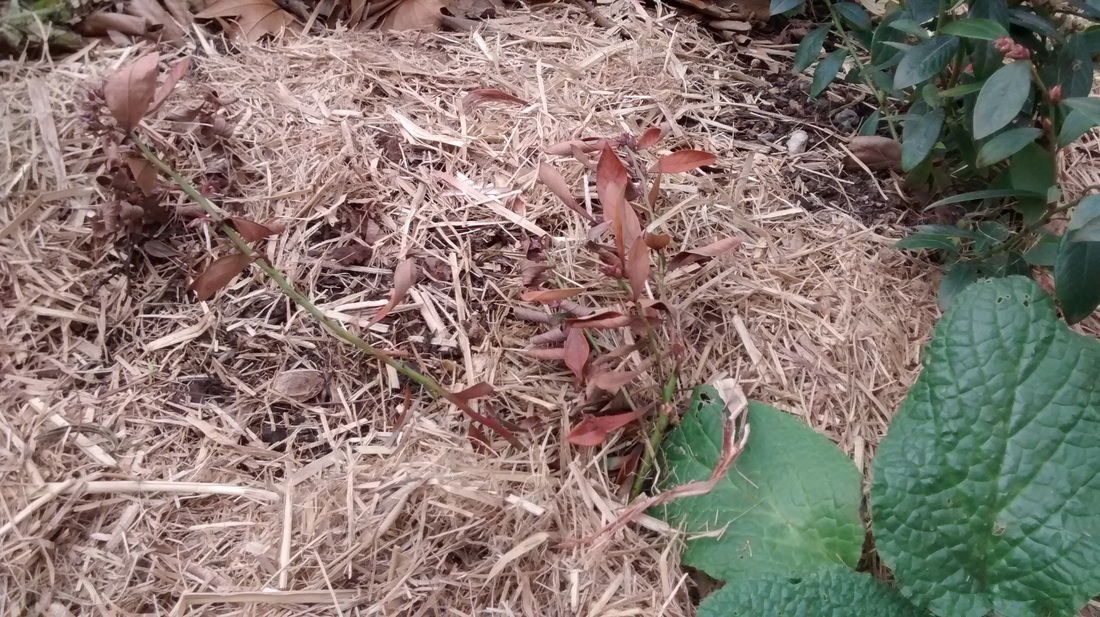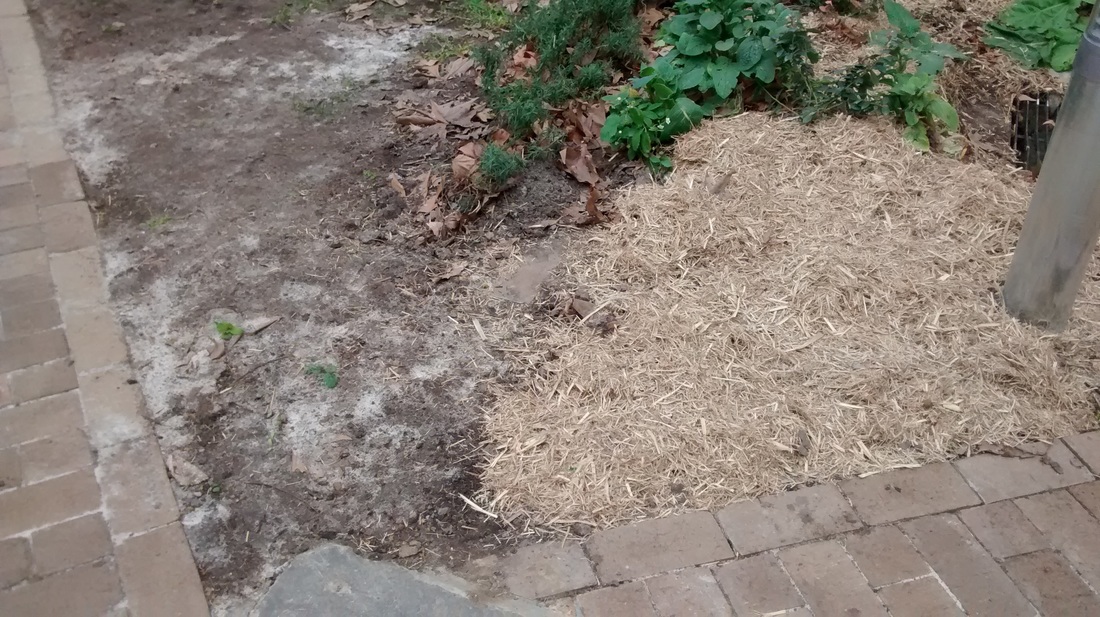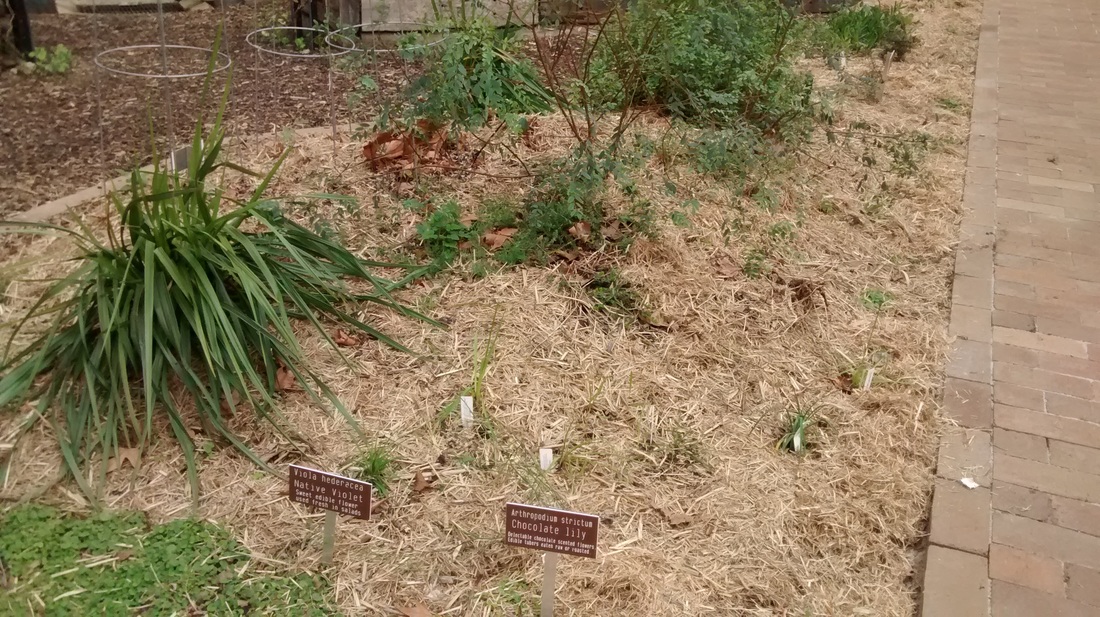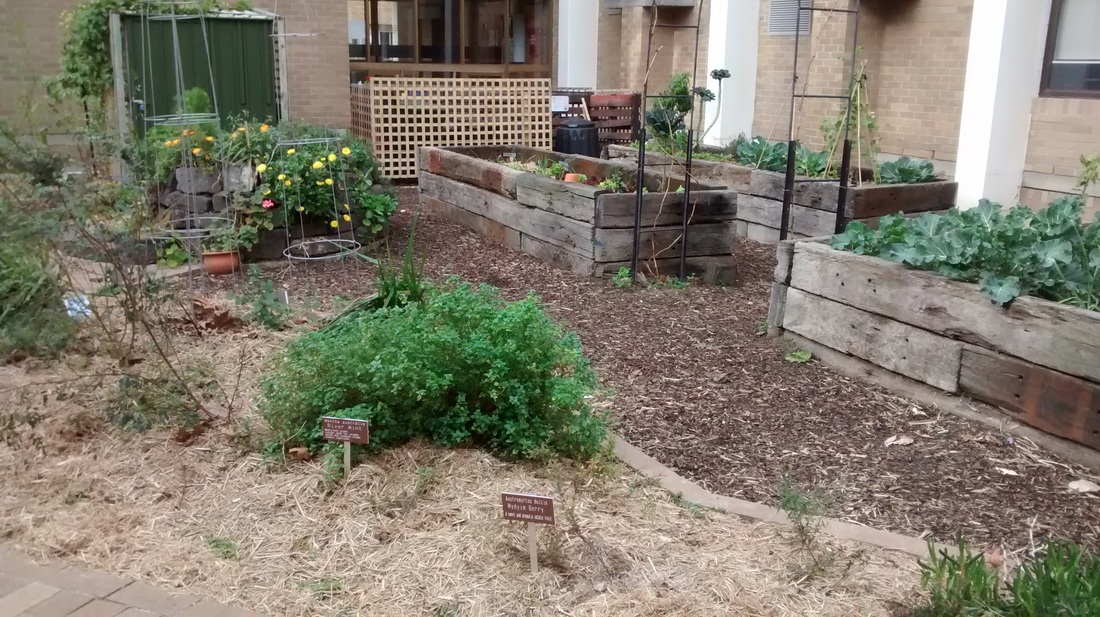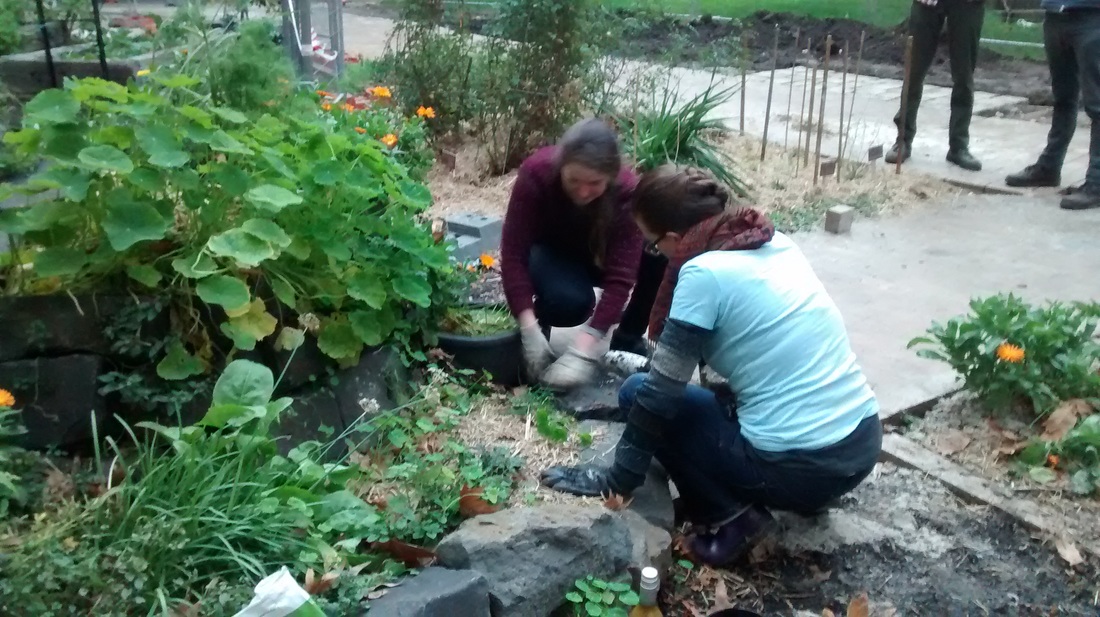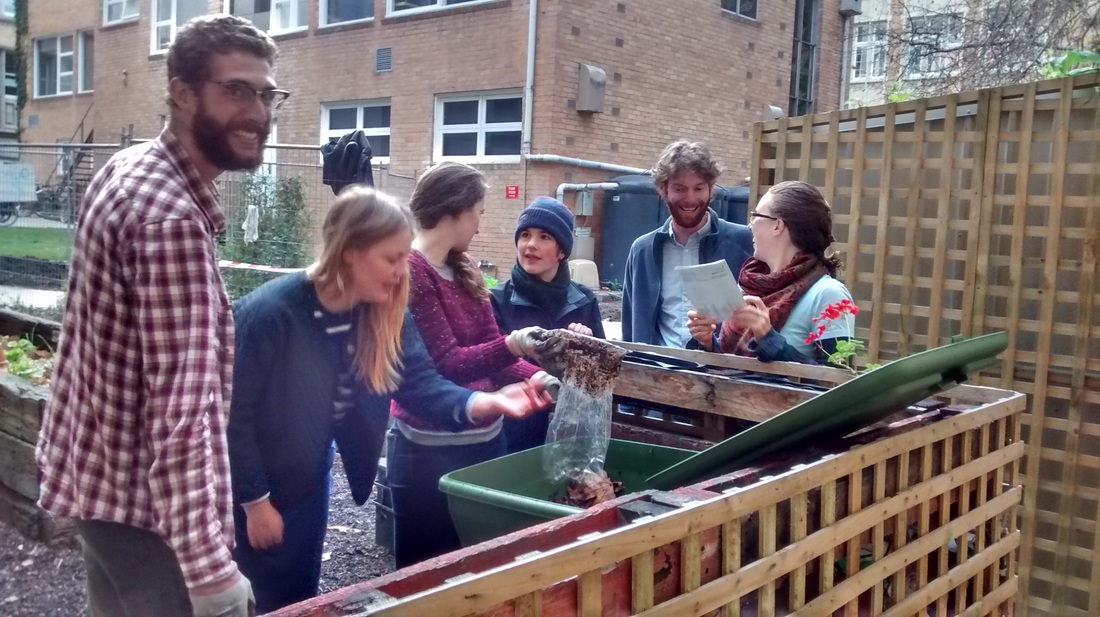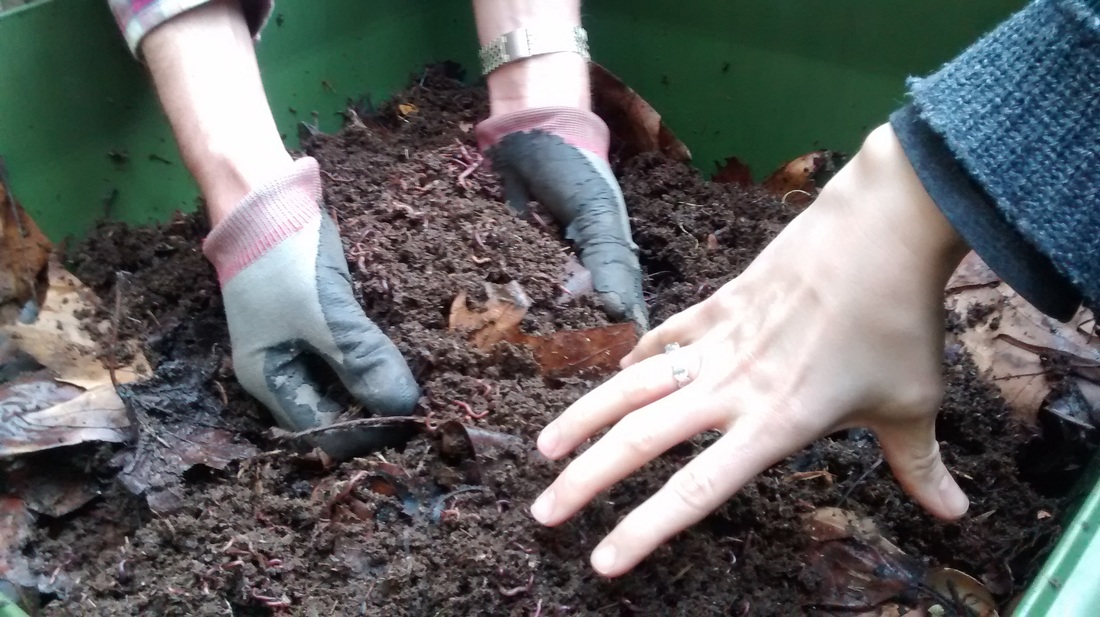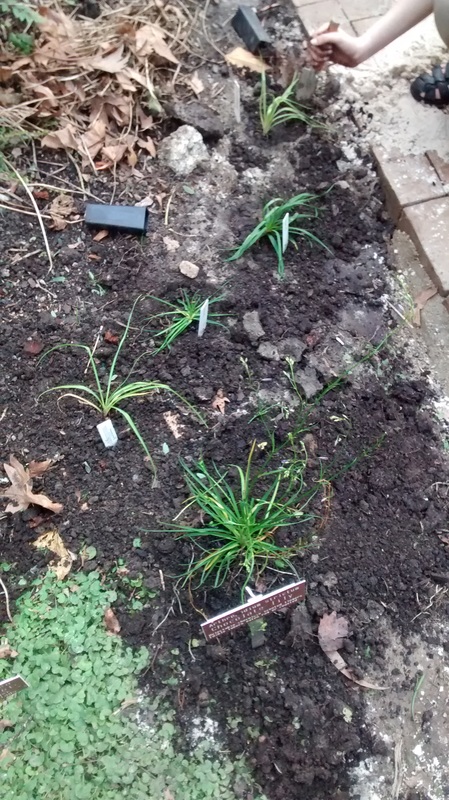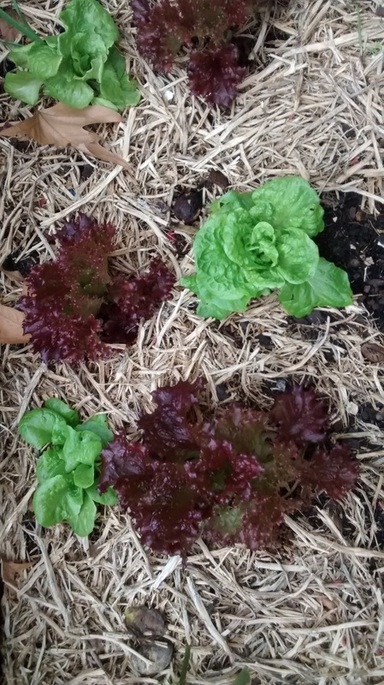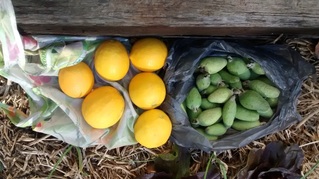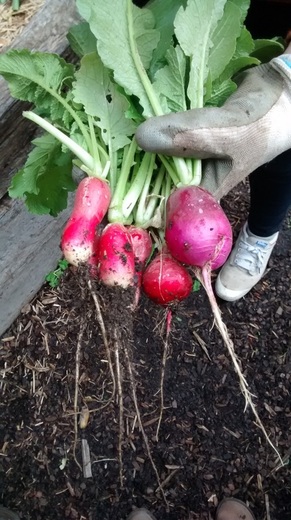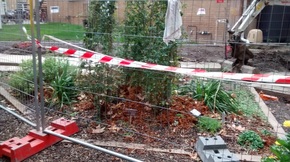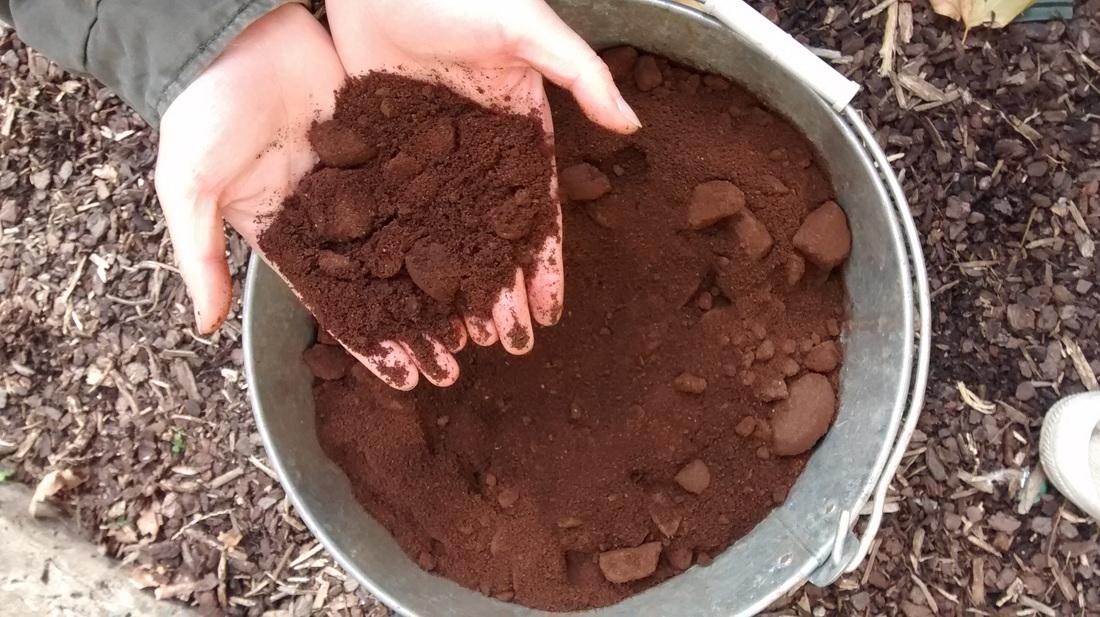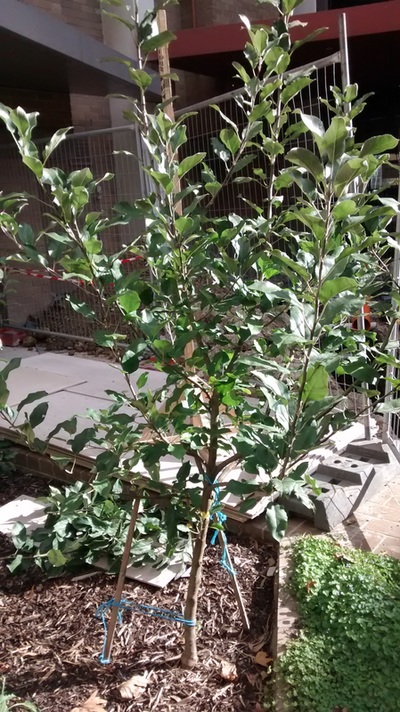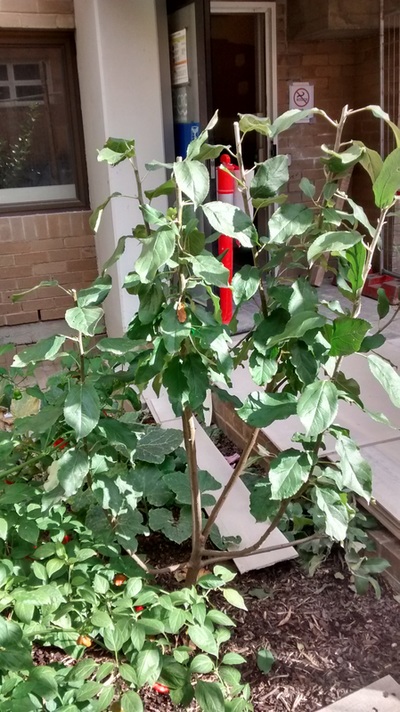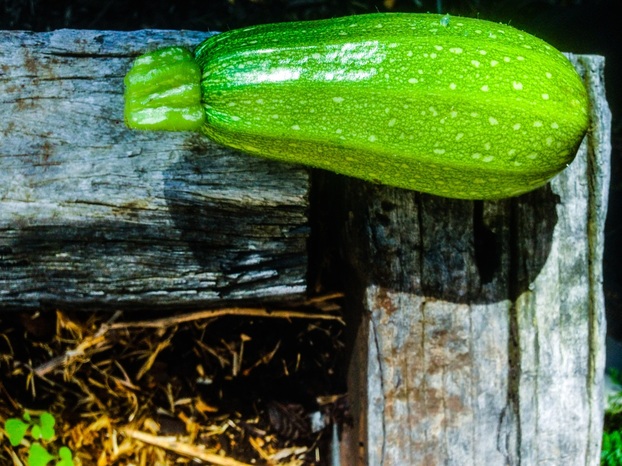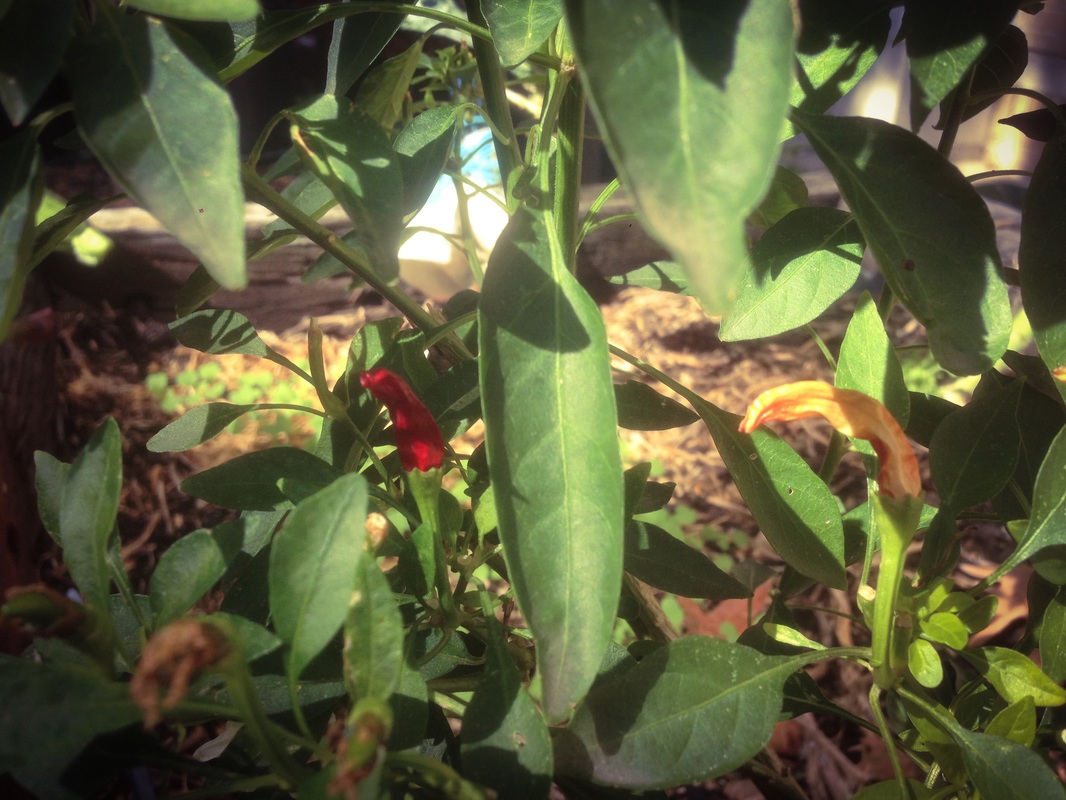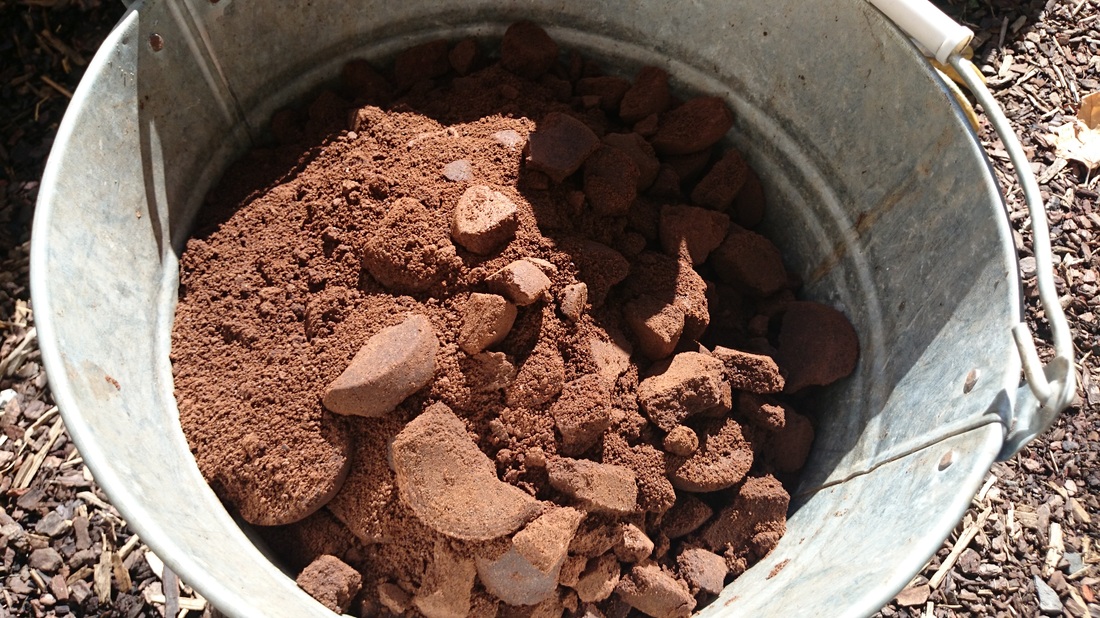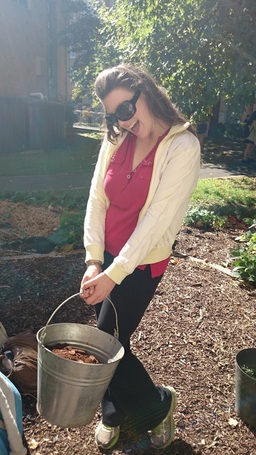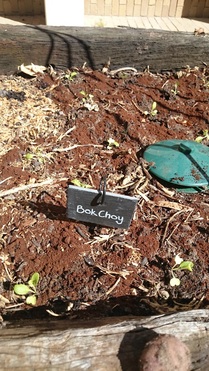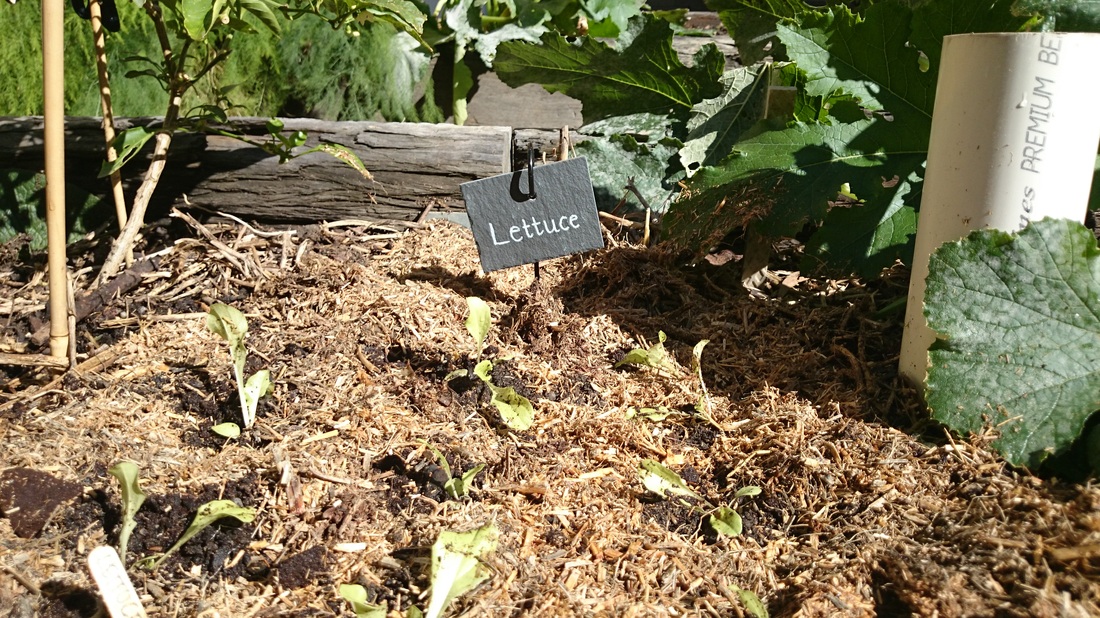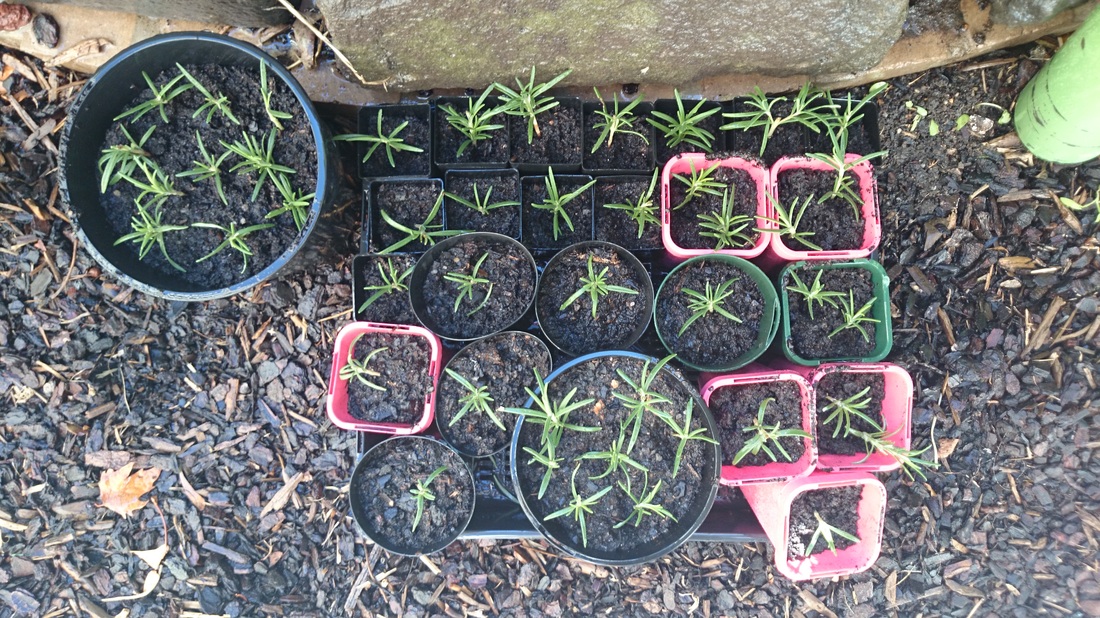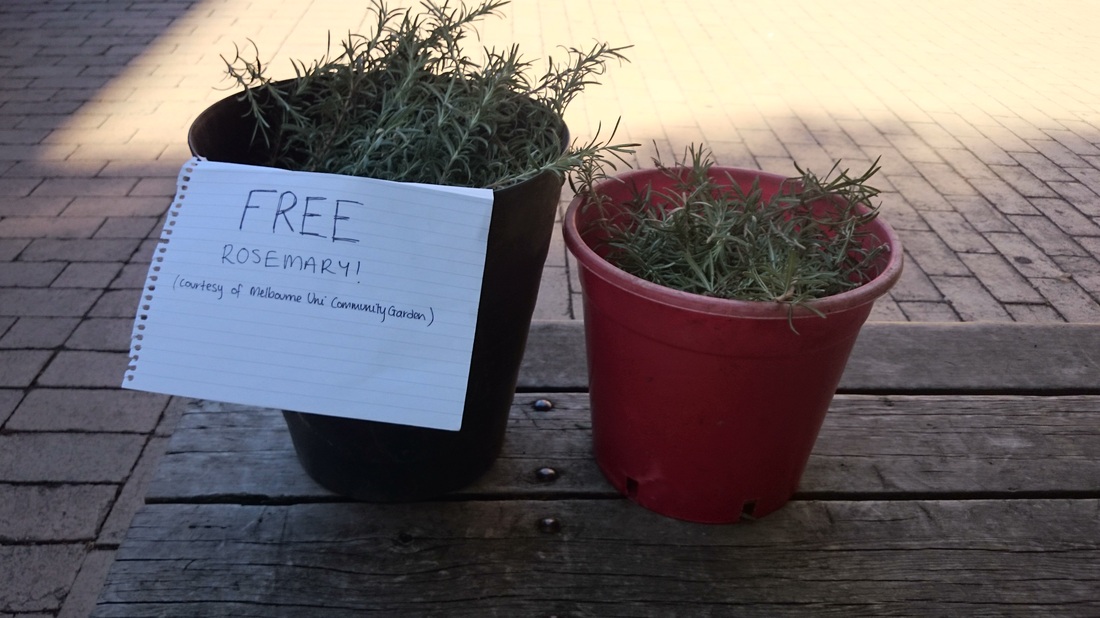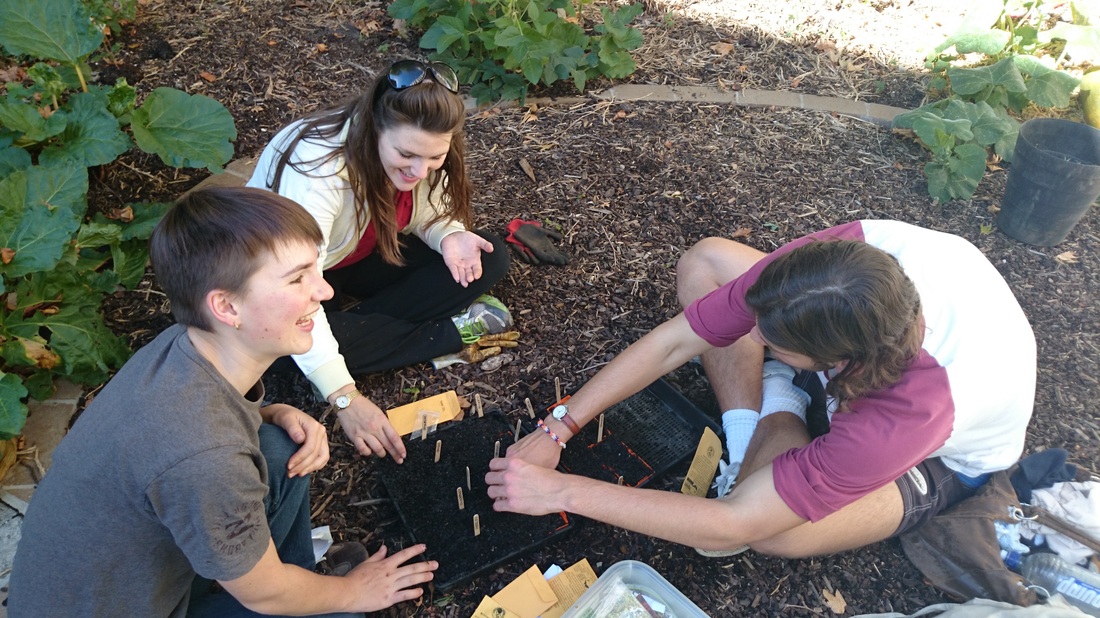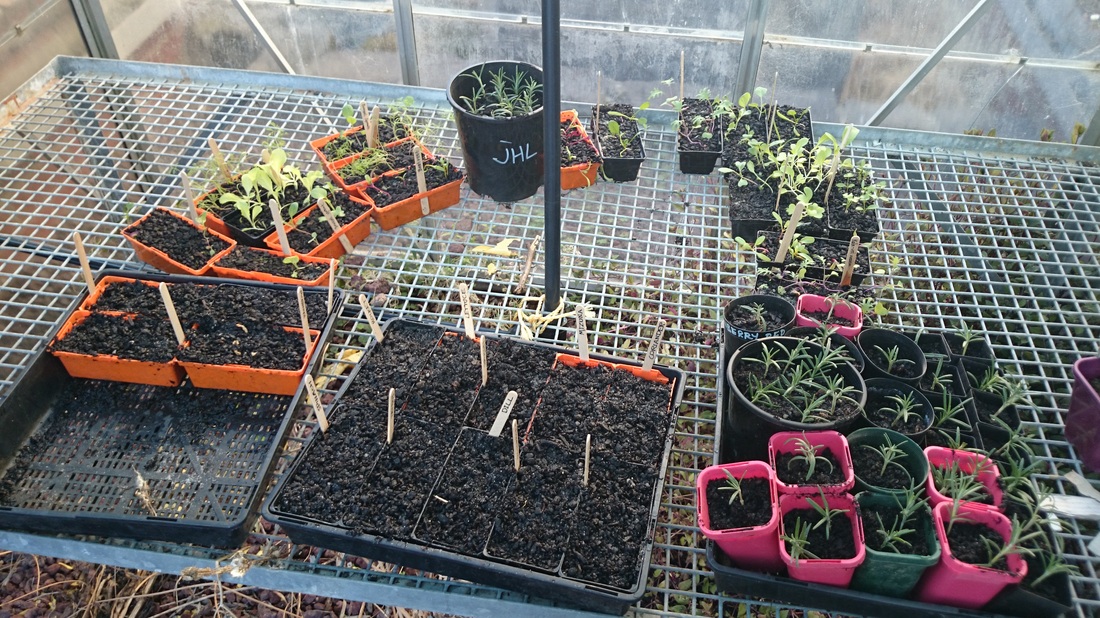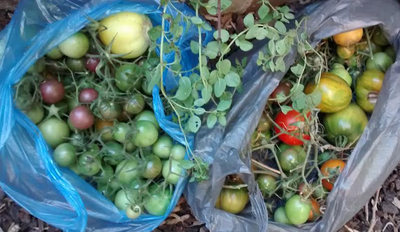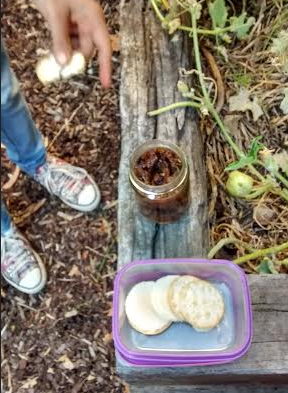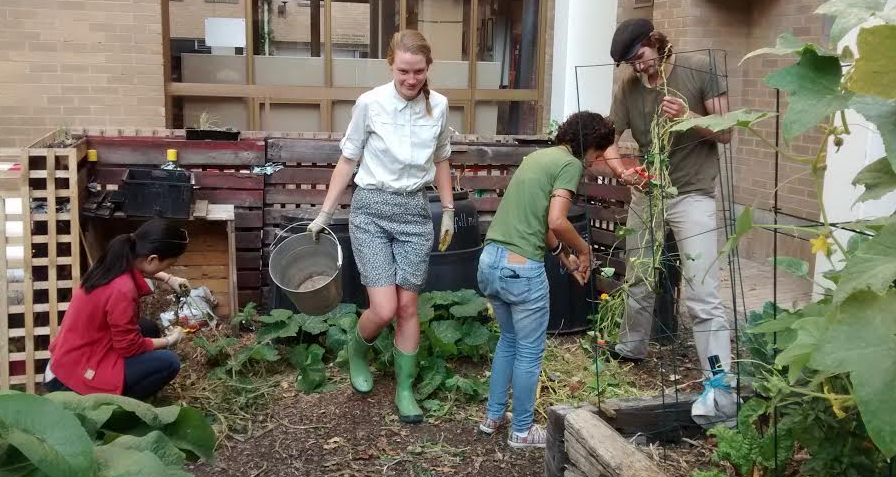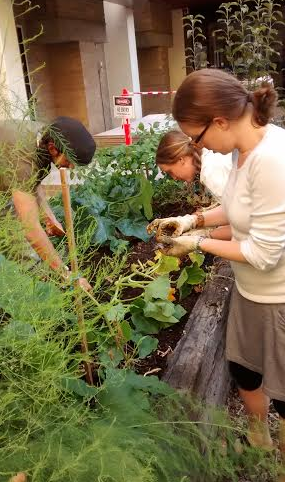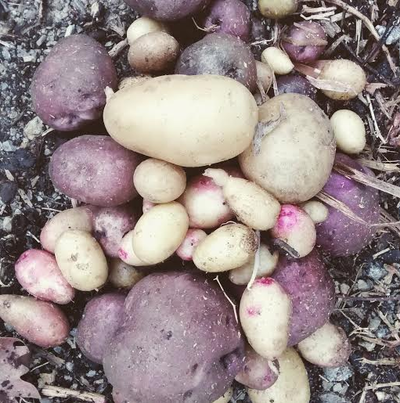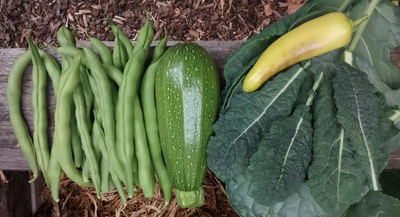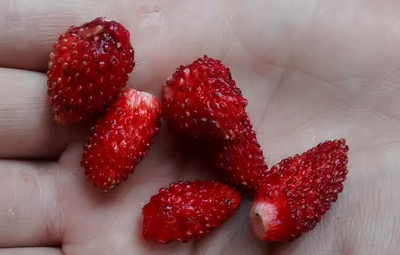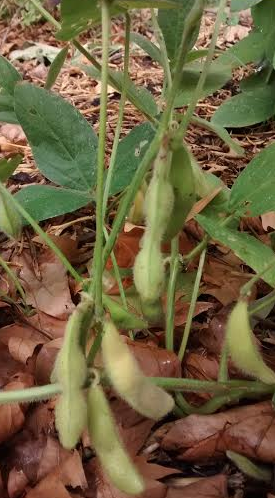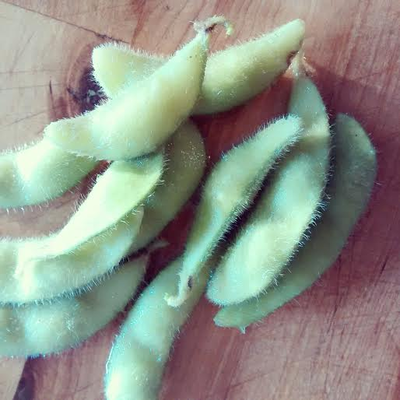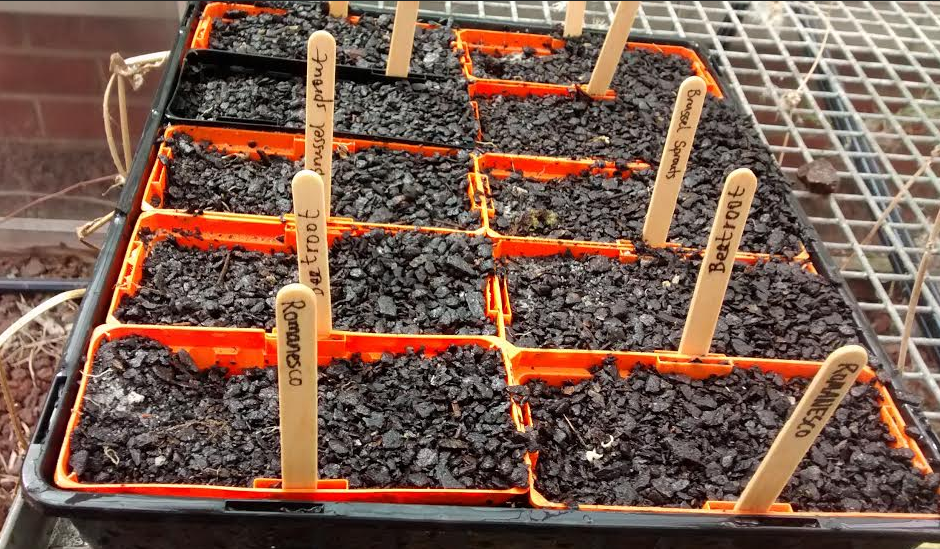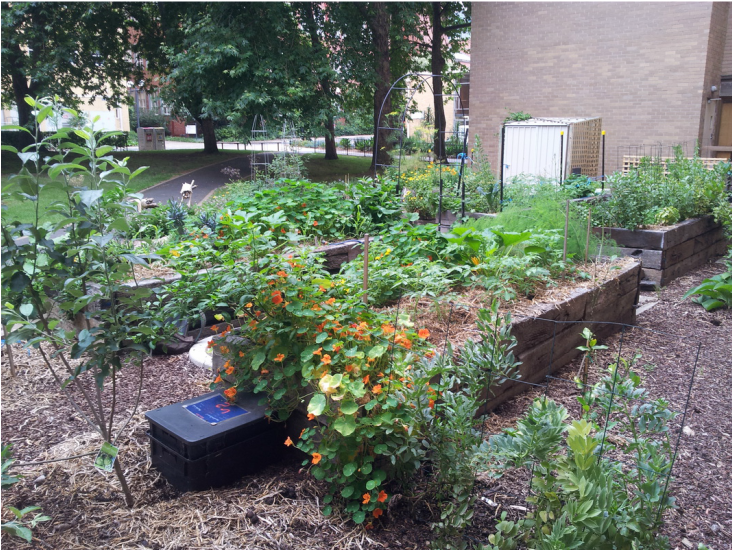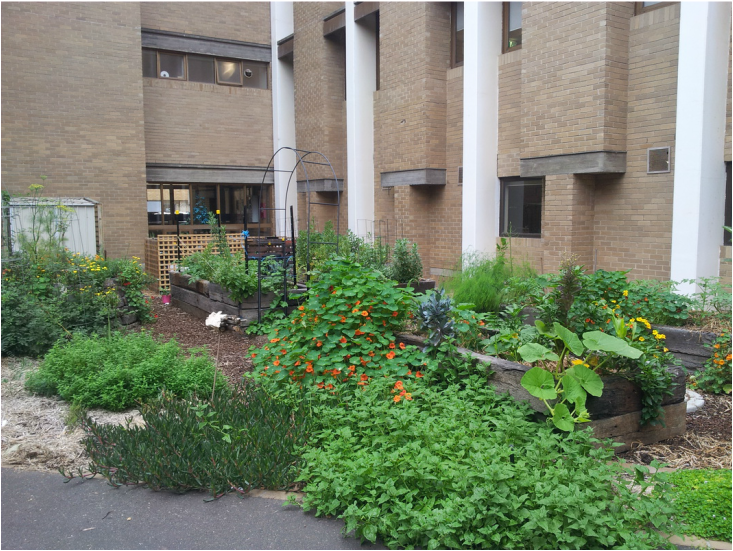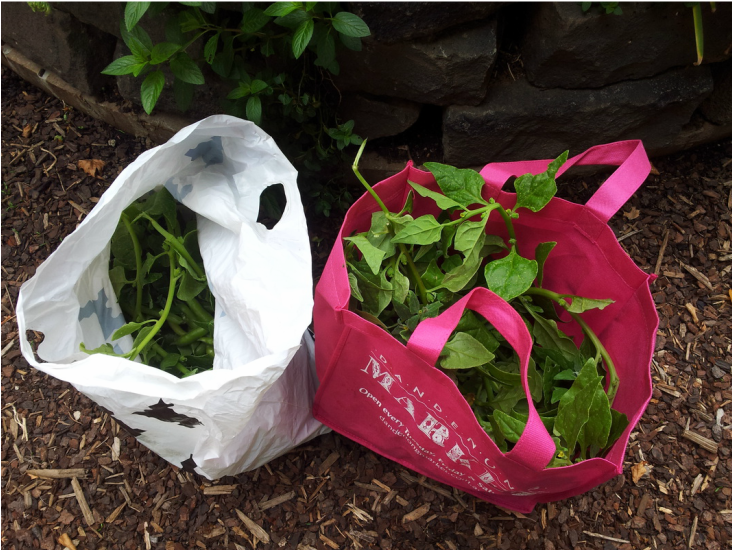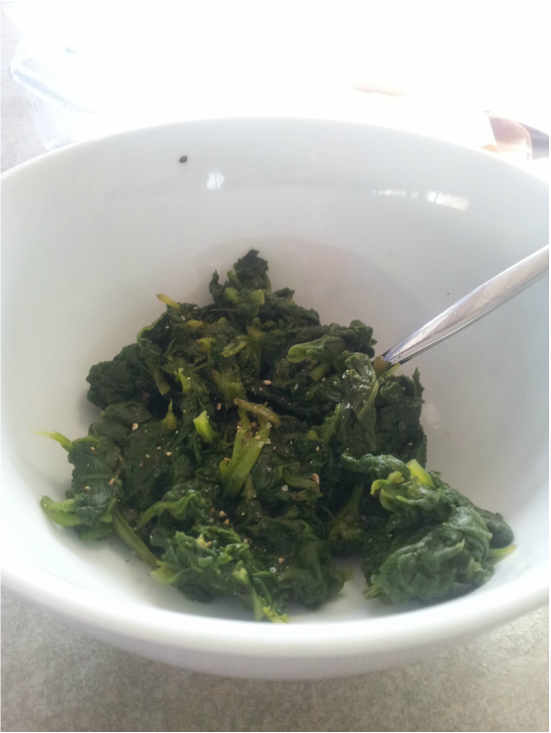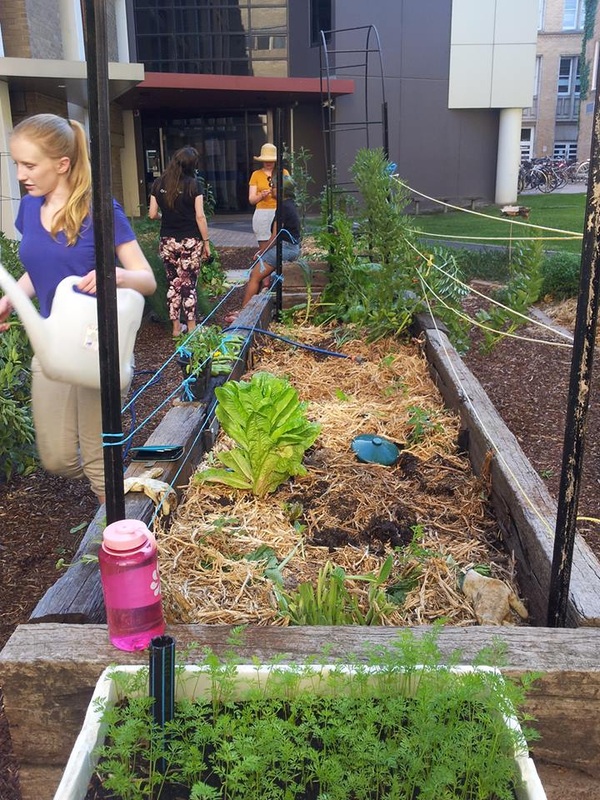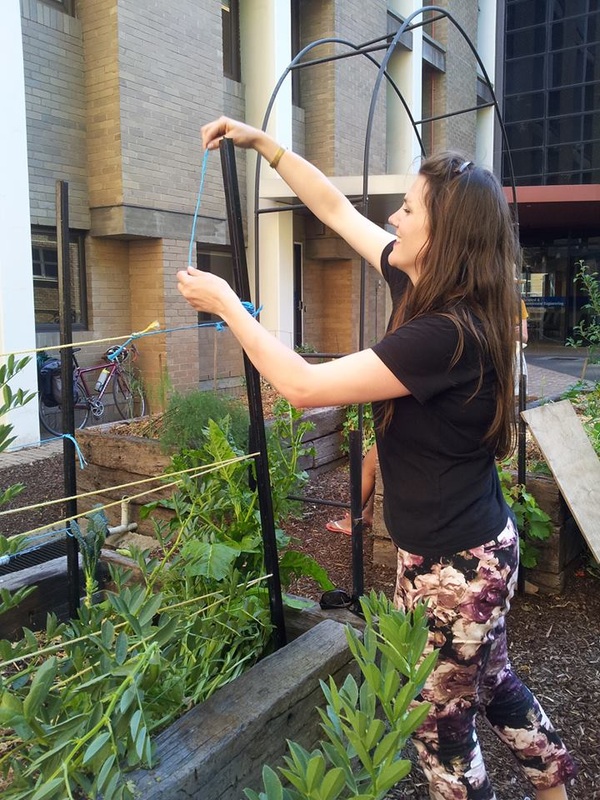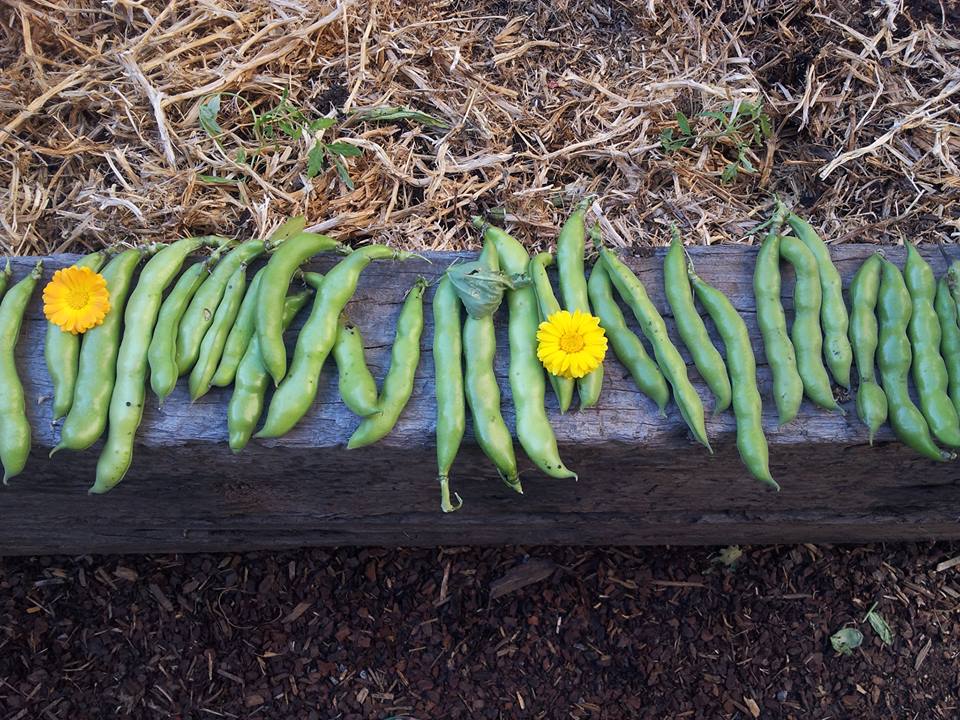|
Anyone who has been part of a community garden, or any community group for that matter, will know that there are always challenges of some kind! We are fortunate to have a group of friendly, enthusiastic members, so we don't have issues with conflict within our group BUT we do have other issues from time to time! This blog will talk about some recent issues we've had with space conflict. Over the past few months, the university has re-done the path next to the garden and added in new lighting. This is great, but it has made things a bit difficult for us! This is how we've managed the issues presented by these works:
2. Damage to apple tree and blueberry bushes Our Granny Smith apple tree was slightly in the way of the temporary fencing used, so the contractors tied its branches together to move it out of the way. While they meant well and we appreciate them not snapping the tree, they tied it up extremely tightly with a very thin, very tough cord (like thick dental floss!). This cord cut into the flesh of the tree, so we had to remove it. Since then we have kept an eye on the health of the tree and looked out for signs of infection in the branches, and thankfully, it seems to be unharmed. Similarly, three blueberry bushes were in the way, but unfortunately they did not fair as well as the apple tree! The fencing was placed directly across our perennial edibles bed, and three blueberry plants were either snapped or uprooted. The uprooted plant was transplanted and given lots of water, but sadly it didn't survive (see below right). The branches that were snapped off the other two bushes were used as cuttings to grow new plants in our greenhouse. We are yet to see how they go! 3. Damage to soil structure In order to install the new light and run power to it, a large chunk of our perennials bed was cut into, as well as the entire front of our native edibles bed. This not only directly destroyed plants, but presented challenges for the rest of the bed while the gap was there as soil next to the holes eroded and fell in, an issue both for us and the builders! The holes dug ranged from approx. 40-80cm in depth, digging through the top soil as well as the underlying clay and rock layers. This soil was replaced, but of course not in the right order! The layers are now jumbled up, and who knows what impact this has had on the nutrient levels of the soil. We will endeavour to do some testing on this soil soon to see what the effects are. In the meantime, we have mulched the area to reduce the chance of weeds coming up and to stop it from looking too unsightly. You can see in the photos below that our natives bed has more or less recovered. Thankfully, Aussie plants are pretty tough! Along the path's edge, we have planted Native Violets (Viola hederacea), and we are hoping that they will cope with the altered soil composition and spread out. Our experience with this has taught us firstly, that not everyone appreciates plants like we do and secondly, that communication and education are so important! This should, of course, go both ways. We understand that the works carried out were necessary, and perhaps some more information about exactly how they would benefit the university community (e.g. the provision of lighting which is great for us) would have been useful. We learnt that the contractors took more care with where they dumped rubbish after we informed them of the importance of our native plants (which are expensive, culturally valuable and hard to get established!). Ideally, a quick meeting with 'us' and 'them' before works commenced could have reduced the negative impact of the works on our garden. Thankfully it's more or less back to normal now, and we'll just need to focus on rebuilding the soil where it was altered and monitoring the health of our damaged plants!
What a productive working bee we had today! It was great to see some new faces and hear some brilliant new ideas and opinions. Fuelled with beer, cider and snacks, we gave our natives bed some TLC and installed a fancy new worm farm. We planted some new Chocolate and Bulbine Lilies, beautiful natives that have edible tubers, as well as a new Midgen Berry (one of the most delicious native berries!). We also transplanted some native violets to make a border of them around the edge of the bed. Our new worm farm looks great; it's bigger and will make harvesting worm juice and castings for the garden a lot easier. We hope everyone now feels recharged for the rest of exams. Good luck!
The sun came out today for a very productive and delicious working bee! We had a mini produce swap of lemons and feijoas, and harvested some beautiful radishes and chillies. We gave the compost some much needed TLC, and spent time picking coffee pods out of it which apparently are not compostable, despite what the packet may say! Even though there are construction works going on right next to us and we've sadly temporarily lost access to our natives bed and part of our perennials bed, the garden is looking wonderful. Winter crops are just beginning, with rocket and radishes in abundance and peas, broccoli, broad beans and coriander just around the corner. Winter isn't all bad!
There were just two of us brave enough to face the 16 degree weather at the garden today, so we pottered around and did a few little jobs. First of all, we pruned the apple trees, not hard (save that for winter), but just to take out a bit of their height. We should have done this in summer but time gets away from us sometimes! We also pruned the native raspberries back to their rough topiary forms - they grow so vigorously that it seems like we are always pruning them! We re-planted the lettuces that have fallen victim to slug attacks and spread a lot of coffee grounds around them to hopefully keep the slugs and snails at bay this time (thanks Carte for the coffee grounds!). As we worked, we snacked on more midgen berries and alpine strawberries from the garden (sorry, no photos - they were too delicious to wait).
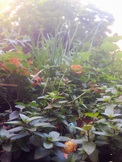 We have achieved great things. This week has been a fantastic display of meetings, food and mad dashes to Ceres, a whimsical hunt for hidden chocolates and mud dirtied fingers and toes. Our first general meeting has moved us towards boosting community involvement and engagement and ideas for a fresh lick of paint for the sheds corrugated walls. The Bee started with a walk between the rows of the garden beds, glints and glimmers catching the eye. No, before you ask, the chocolate wrappers didn’t hold their shape for long but in their place we found a nest of new plants settled in their tiny portable pots - natives, greens, beans, leafy things...the edible bits that keep you going in the winter cold. Things for soups, things for bread and dips and things for tea. The sprightly morning trip to Ceres Environment Park Nursery, thank-you to Pippa and Jess, was highly successful and will render the garden eternally productive throughout these cold oncoming months. And while we are excited for the oncoming crop, a formal note of appreciation must be made to the ever fruitful zucchini vine and stoic chili bush of summer gone. You’ve been great. You can fruits for as long as you like. We won’t judge you for it.
Bok Choy and Lettuce seedlings planted! (Please note the beautiful signage) We pruned the rosemary, taking some cuttings and giving away the leftovers. And finally, we planted a range of seeds including some leafy greens, leeks and everyone's favourite: Brussel Sprouts.
Thanks for all your help! The time came to cut down our tomato forest, which was sad because it required us to admit that summer is over and winter is coming. Tash made green tomato chutney form the unripened fruit, which was absolutely delicious. In one of the new clearings, we spread out compost and planted broad beans to replenish the soil nitrogen after the nitrogen-hungry tomato crop. We also harvested our first soy beans! They look so cute and fluffy growing on the bush, and taste even better than they look once turned into edamame. Simply boil for 4 minutes in salty water, plunge into cold water, pat dry then season with extra salt.
Today we planted a lot of seeds for our Autumn garden: cabbage, broccoli, beetroot, silver beet, parsley, kale, Brussels sprouts and dill. We fertilised the seeds with fish emulsion and put them in our glasshouse (we're pretty sure that we turned the automatic watering system ON, but time will tell). Next, we tidied up the garden beds: cleaning up dead and powdery mildewed leaves on the Cucurbitaceae (pumpkins, zucchini, cucumbers) and tomatoes. Some of the tomato plants were getting a bit out of hand, so we pulled up the old plants, and replanted cuttings from their healthy growth. The stems were covered in root primordia (tiny buds ready to turn into roots) so the cuttings should take quickly. Tash was telling us about a restaurant that makes oil from the stems of tomatoes. I googled it but couldn't find anything: only discussions about how toxic they might be and suggestions to put tomato leaves in pasta sauces at the last minute to enhance the tomato flavour (but you need to take it out before eating because of the toxicity thing). Anyone know anything about tomato stem oil? I am really curious!
The garden is looking absolutely beautiful - tomatoes, corn, and zucchini seedlings are coming up nicely. The grapes have taken giant leaps up the arch way, soy beans are staying strong, and our natives bed is becoming a green carpet of edibles and flowers. Pictures will sum it up best; Pippa and I are competing to come up with the best recipe for warrigal greens. We each took a bag. Pippa made Kale and Warrigal greens daal with rice. I made steamed greens with sour cream and crepes. I think we will need to call it a draw!
This working bee saw us clearing out most of the broad beans and planting lots of tomatoes in rich new compost. At last count, we had 22 tomato plants, and there are still more to go in! We also rigged up some support for them using star pickets and recycled hay twine. They may not be the prettiest supports, but it won't make much difference when they are covered in tomatoes! Our pumpkins, zucchinis, cucumbers and corn are all doing really well too.
|
AuthorsRead all about it: MUC Garden and Burnley Student Association share updates on their activities. Blogs about...
All
|
